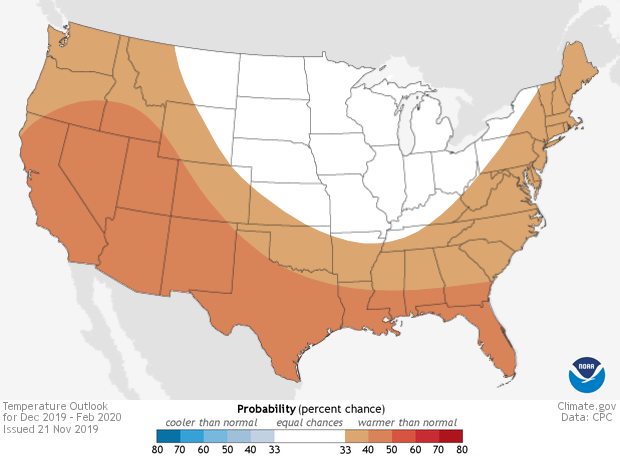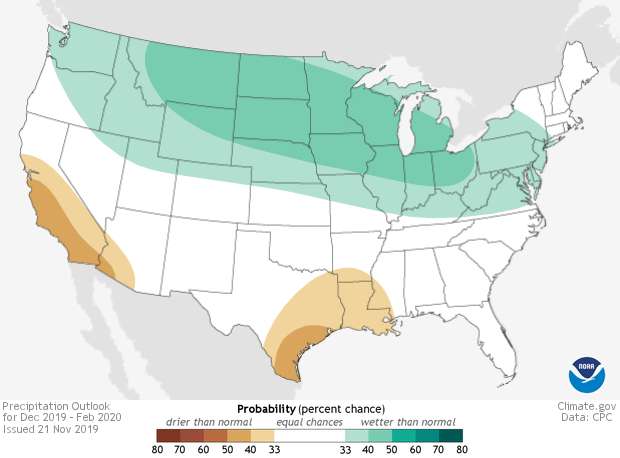The El Niño/Southern Oscillation is neutral is present and expected to persist through the winter and into the spring. The temperature outlook favors above-average temperatures across the western, southern, and eastern parts of the nation, and Alaska and Hawaii.
Other than over Hawaii and western Alaska, probabilities are all between 33-50%, indicating the confidence of this outlook is less than for other winter outlooks. This lower confidence is partly due to the absence of ENSO’s influence, says the ENSO blog at NOAA’s Climate.gov.

The precipitation outlook shows that wetter-than-average conditions are favored over much of the northern part of the country, as well as Hawaii and Alaska. Below-average precipitation is only favored over central and southern California and southern Arizona and in parts of the southern Plains. Again, confidence is quite modest, with probabilities only exceeding 50% over Hawaii and southwestern Alaska.

Both maps include blank regions where neither above-, near- nor below-normal is favored. These areas (shown in white and labeled EC for “equal chances”), have the same chance for above, near, or below-normal (33.33%). This doesn’t mean that near-average temperature or precipitation is favored this winter in those regions, but rather that there’s no tilt in the odds toward any outcome.
The ENSO blog provides a reminder that these forecasts are probabilities (% chance) for below-, near-, or above-average outcomes with the maps showing only the most likely outcome (3). Because the probabilities shown are less than 100% (of course), there is no guarantee you will see temperature or precipitation departures that match the color on the map.
“As we’ve explained in earlier blog posts, even when one outcome is more likely than another, there is still always a chance that a less favored outcome will occur (last winter’s forecast for the northern Plains and Pacific Northwest are a good example of the less likely outcome occurring).”

